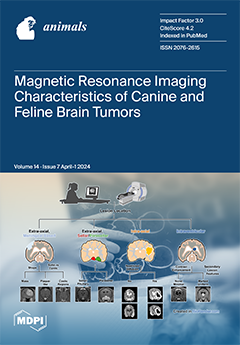The contamination of aquatic ecosystems by the heavy metal copper (Cu) is an important environmental issue and poses significant risks to the physiological functions of aquatic organisms.
Macrobrachium rosenbergii is one of the most important freshwater-cultured prawns in the world. The hepatopancreas of crustaceans is a key organ for immune defense, heavy metal accumulation, and detoxification, playing a pivotal role in toxicological research. However, research on the molecular response of the hepatopancreas in
M. rosenbergii to Cu exposure is still lacking. In this study, the transcriptomic response in the hepatopancreas of
M. rosenbergii was studied after Cu exposure for 3 and 48 h. Compared with the control group, 11,164 (7288 up-regulated and 3876 down-regulated genes) and 10,937 (6630 up-regulated and 4307 down-regulated genes) differentially expressed genes (DEGs) were identified after 3 and 48 h exposure, respectively. Most of these DEGs were up-regulated, implying that gene expressions were largely induced by Cu. Functional enrichment analysis of these DEGs revealed that immunity, copper homeostasis, detoxification, DNA damage repair, and apoptosis were differentially regulated by Cu. Seven genes involved in immunity, detoxification, and metabolism were selected for validation by qRT-PCR, and the results confirmed the reliability of RNA-Seq. All these findings suggest that
M. rosenbergii attempts to resist the toxicity of Cu by up-regulating the expression of genes related to immunity, metabolism, and detoxification. However, with the excessive accumulation of reactive oxygen species (ROS), the antioxidant enzyme system was destroyed. As a result, DNA damage repair and the cellular stress response were inhibited, thereby exacerbating cell damage. In order to maintain the normal function of the hepatopancreas,
M. rosenbergii removes damaged cells by activating the apoptosis mechanism. Our study not only facilitates an understanding of the molecular response mechanisms of
M. rosenbergii underlying Cu toxicity effects but also helps us to identify potential biomarkers associated with the stress response in other crustaceans.
Full article






